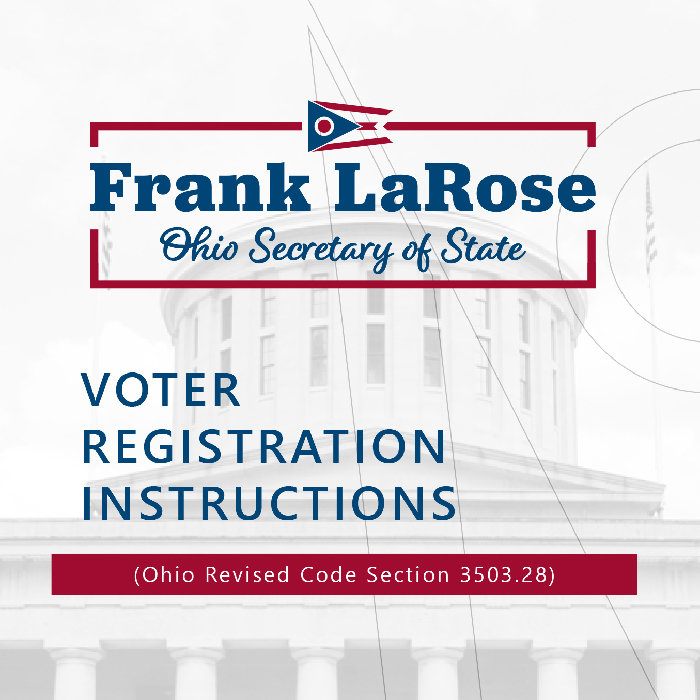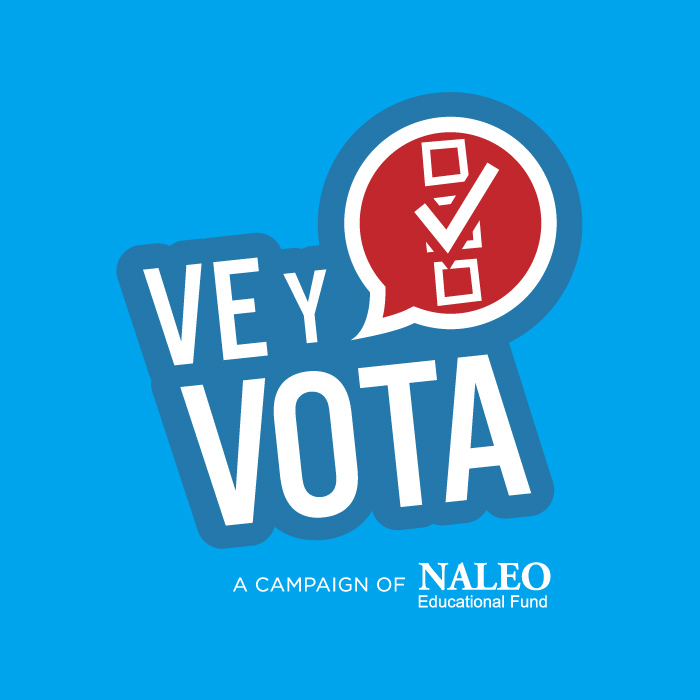Cleveland Voter Hub
Welcome to the Voter Hub, where we encourage you to research, register, and VOTE! Voting is crucial, empowering citizens to influence policies on healthcare, education, the environment, and the economy.

Key Dates & Important Deadlines
Election Day
November 5, 2024

On This Page
Important Information
In This Collection
What Ways can I Vote?
In the general election, there are several ways you can cast your vote, depending on the laws and regulations of your state. Here are the common methods:
In-Person Voting
- Election Day Voting: You can go to your designated polling place on Election Day to cast your ballot.
- Early Voting: Many states offer early voting periods, allowing voters to cast their ballots in person before Election Day. This can help avoid long lines and scheduling conflicts.
Absentee Voting
- By Mail: You can request an absentee ballot, which will be mailed to you. You complete the ballot at home and return it by mail or drop it off at a designated location.
- In-Person Absentee Voting: Some states allow you to cast an absentee ballot in person at a designated location before Election Day.
Mail-In Voting
- Universal Mail-In Voting: In states with universal mail-in voting, all registered voters automatically receive a ballot by mail. Voters can complete and return the ballot by mail or drop it off at a designated location.
Drop Boxes
- Many states provide secure drop boxes where voters can submit their completed mail-in or absentee ballots, bypassing the need to send them through the postal service.
Curbside Voting
- For voters with disabilities or those who have difficulty leaving their vehicle, curbside voting is often available. Election workers bring the ballot to the voter’s vehicle.
Provisional Voting
- If there are questions about your eligibility to vote or if you do not have the required identification at the polling place, you can cast a provisional ballot. Your eligibility will be verified later, and if confirmed, your vote will be counted.
Assistance for Disabled Voters
- Voters with disabilities have several options to ensure they can vote, including accessible voting machines at polling places, assistance from election workers, or having someone assist them in casting their ballot.
Important Considerations:
- Registration: Ensure you are registered to vote before the deadline in your state.
- Deadlines: Pay attention to deadlines for requesting absentee or mail-in ballots and the final date for returning them.
- Identification: Check if your state requires identification to vote and ensure you have the necessary documents.
By understanding the available voting methods and preparing in advance, you can ensure your vote is counted in the general election.
How to Register
If you’re ready to register to vote, then you can visit your local Cleveland Public Library to get started. If you’re not able to make it to one of our libraries, then you can visit the Board of Elections or register online. Here’s what you’ll need to register:
What you’ll need:
- Ohio driver’s license or Ohio identification card number
- Name
- Date of Birth
- Address
- Last four digits of your Social Security number
How to Fact Check
Several reputable websites specialize in fact-checking and can help verify the accuracy of information. Here are some of the most well-known and reliable fact-checking sites:
- FactCheck.org: A project of the Annenberg Public Policy Center, FactCheck.org monitors the factual accuracy of statements by politicians, political ads, and news reports.
- Snopes: One of the oldest fact-checking sites, Snopes specializes in debunking myths, rumors, and misinformation on a wide range of topics.
- PolitiFact: Run by the Poynter Institute, PolitiFact rates the accuracy of claims made by elected officials and others in the political sphere, using a “Truth-O-Meter” scale.
- TruthOrFiction.com: This site investigates the truthfulness of various stories, rumors, and claims circulating online, providing detailed explanations of their findings.
- The Washington Post Fact Checker: The Fact Checker blog by The Washington Post assesses the truthfulness of statements made by politicians and public figures, using a “Pinocchio” scale.
- Reuters Fact Check: Part of the Reuters news agency, this site evaluates the accuracy of widely shared news stories and social media posts.
- AP Fact Check: The Associated Press (AP) provides fact-checking on political claims, viral rumors, and other widely shared misinformation.
- BBC Reality Check: This site from the BBC checks the accuracy of news stories, political statements, and social media posts.
- Full Fact: A UK-based independent fact-checking charity that assesses claims made by politicians, public institutions, and the media.
- Media Bias/Fact Check: While primarily a resource for evaluating the bias of media sources, this site also provides fact-checks and a comprehensive list of fact-checking websites.
Finding Candidate information
Get to know the candidates before your vote! There are sites dedicated to collecting information about the candidates on your ballot to help make you an informed voter.
Candidates
Who Represents Me?
Become An Election Day Worker
Join Cuyahoga County in supporting democracy by helping out on Election Day. Assist with staffing the polls, managing ballots, and ensuring a smooth voting process. Enjoy a meaningful role and earn $220 for your efforts.
Know The Terms
In This Collection
Voter Suppression
Voter suppression refers to a variety of strategies and tactics aimed at preventing or discouraging certain groups of people from voting. These methods can be overt or subtle and are often used to influence the outcome of elections by reducing the participation of specific demographics, typically those who may vote against the interests of those implementing the suppression tactics. Common forms of voter suppression include:
- Voter ID Laws: Requiring specific forms of identification to vote, which some groups may find difficult to obtain.
- Voter Roll Purges: Removing names from voter registration lists, sometimes based on inaccurate or discriminatory criteria.
- Limited Polling Places and Hours: Reducing the number of polling locations or restricting voting hours, making it harder for people to cast their ballots.
- Gerrymandering: Redrawing electoral district boundaries to dilute the voting power of certain groups.
- Disinformation: Spreading false information about voting procedures, dates, or eligibility.
- Intimidation: Using threats or coercion to discourage people from voting.
- Complex Registration Processes: Implementing complicated or cumbersome voter registration procedures that discourage or prevent people from registering to vote.
These tactics can disproportionately affect minority groups, the elderly, students, and low-income individuals, thereby undermining the democratic process.
Disinformation vs. Misinformation
he key difference between disinformation and misinformation lies in the intent behind the dissemination of false or misleading information. Misinformation is shared without the intent to deceive, while disinformation is spread with a deliberate aim to mislead or manipulate.
Misinformation:
- Definition: False, inaccurate, or misleading information that is spread without the intention to deceive.
- Intent: The person sharing the misinformation believes it to be true or does not realize it is incorrect. There is no malicious intent.
- Examples: Sharing a news article with incorrect information because you believe it to be accurate, spreading unverified rumors, or passing on incorrect statistics without realizing they are wrong.
Disinformation:
- Definition: Deliberately false or misleading information spread with the intent to deceive, manipulate, or cause harm.
- Intent: The person or entity spreading disinformation knows it is false and aims to mislead or influence others for specific purposes.
- Examples: Creating and distributing fake news to sway public opinion, using deepfakes to discredit someone, or spreading false propaganda to undermine trust in institutions.
Gerrymandering
Gerrymandering is the practice of manipulating the boundaries of electoral districts to favor a particular political party, group, or incumbent. This is done by redrawing district lines to create an advantage for the ruling party or to weaken the influence of opposition voters. The main objectives of gerrymandering are to maximize the number of seats won by the party in power and to minimize the electoral success of opponents. There are two primary techniques used in gerrymandering:
Packing:
- Definition: Concentrating as many voters of the opposing party as possible into a single district to reduce their influence in other districts.
- Effect: This creates a few districts where the opposition has overwhelming majorities, thus wasting their votes, while allowing the party in power to win more districts by smaller margins.
Cracking:
- Definition: Dispersing voters of the opposing party across many districts to dilute their voting power.
- Effect: This prevents the opposition from achieving a majority in any of those districts, thereby minimizing their representation.
Gerrymandering can undermine the principles of fair representation and democracy by allowing politicians to choose their voters instead of voters choosing their representatives. It can lead to uncompetitive elections, disenfranchisement of certain groups, and a lack of accountability for elected officials.
Media Literacy
Media literacy refers to the ability to access, analyze, evaluate, and create media in a variety of forms. Avoiding disinformation requires a proactive and informed approach to consuming media. Here are some safe and effective strategies:
Verify Sources:
- Check the credibility: Use reputable and well-established sources of information.
- Cross-reference: Verify the information with multiple reliable sources.
Evaluate Content:
- Look for bias: Be aware of potential biases in the information.
- Check for evidence: Ensure that claims are supported by evidence and data.
Be Skeptical of Sensationalism:
- Question sensational headlines: Sensational or emotionally charged headlines are often used to grab attention but may not reflect the true content of the article.
Use Fact-Checking Sites:
- Refer to reputable fact-checking organizations: Sites like FactCheck.org, Snopes, PolitiFact, and others can help verify the accuracy of information.
Analyze the Source:
- Check the author: Look up the author’s credentials and background.
- Examine the publication: Consider the reputation and reliability of the publication.
Avoid Echo Chambers:
- Diversify your sources: Consume news from a variety of perspectives to avoid reinforcing your own biases.
- Engage with different viewpoints: Reading different viewpoints can provide a more balanced understanding of an issue.
Verify Before Sharing:
- Pause before sharing: Take a moment to verify the information before passing it on to others.
- Avoid spreading unverified information: Sharing unverified information can contribute to the spread of disinformation.
Stay Informed About Disinformation Tactics:
- Learn about common disinformation techniques: Understanding how disinformation is spread can help you recognize it.
- Stay updated: Keep informed about current disinformation campaigns and strategies.
Educate Yourself and Others:
- Promote media literacy: Encourage others to develop critical thinking and media literacy skills.
- Participate in media literacy programs: Engage in educational programs that focus on recognizing and combating disinformation.
What is a Super PAC
A Super Political Action Committee (Super PAC) is a type of independent political action committee in the United States that can raise and spend unlimited amounts of money to influence the outcome of elections. However, Super PACs are prohibited from directly contributing to or coordinating with the candidates or political parties they support. Here are some key characteristics of Super PACs:
- Unlimited Contributions: Super PACs can accept donations of any amount from individuals, corporations, unions, and other organizations.
- Independent Expenditures: They can spend unlimited amounts of money on political campaigns, but this spending must be independent of the candidates’ campaigns. This means they cannot coordinate their spending with the candidates or parties they are supporting.
- Disclosure Requirements: Super PACs must report their donors and expenditures to the Federal Election Commission (FEC), although the timing and level of detail required can vary.
Multilingual Resources
Stay Engaged
Discover how you can stay engaged with the latest voting information.
Not sure what you’re looking for?
We’re here to help, wherever you are in your journey!



